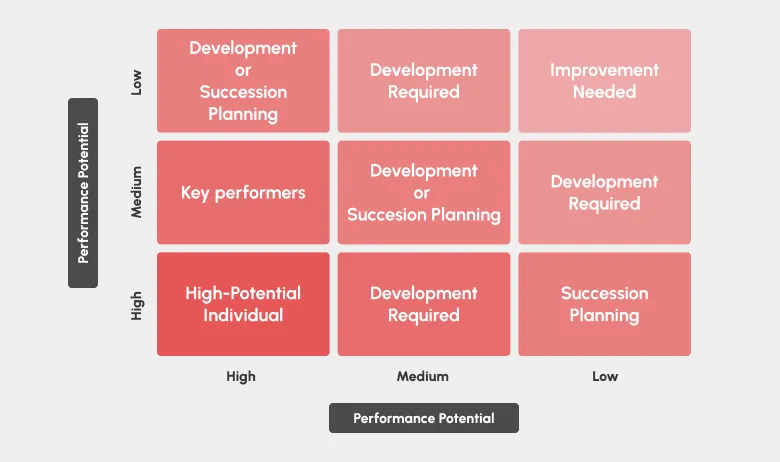What is a Workforce Planning Tool?
In simple words, workforce planning tool is a method or means that is employed to assist in the workforce planning process. These are data-driven tools that help in analyzing the gap between the current and future workforce performance and needs and thereby equip the organization to close the gaps to achieve the organizational objectives.
5 Essential Workforce Planning Tools for HR Professionals
Effective workforce planning tools not only streamline your HR operations but eventually help you attain sustainability and organizational goals. Let’s discuss in detail the five essential workforce planning tools that you can use for strategic workforce planning:
1. Strategic Workforce Planning Map
A Strategic Workforce Planning Map serves as the foundational workforce planning tool for HR professionals to visualize and align the organization’s future talent needs with its strategic objectives. This tool identifies critical roles, skills, and competencies necessary for achieving long-term business goals and HR professionals use this map to understand the current state of the workforce, forecast future needs, and bridge any potential gaps.
Furthermore, the map provides a holistic view of the organization’s talent landscape that allows the HR professionals to identify areas of strength and potential weaknesses. Also, this workforce planning tool enables HR to develop targeted recruitment strategies, training programs, and succession plans. By aligning workforce planning with the organization’s strategic direction, HR can ensure that the right talent is in place to drive success and organizational strategy.
2. 9-Box Grid
The 9-Box Grid is also one of the widely used workforce planning tools that helps HR professionals assess and categorize employees based on their performance and potential. The grid basically consists of a matrix with two axes: performance (vertical) and potential (horizontal). It serves as a kind of barometer as by placing employees in specific boxes within the grid, HR can identify high-potential individuals, key performers, and those who may require development or succession planning.
Moreover, this workforce planning tool aids HR professionals in making data-driven decisions regarding talent development, promotions, and succession planning. By understanding the current and potential future value of each employee, organizations can prioritize investments in training and development initiatives, ensuring a robust pipeline of leaders and skilled professionals.
3. HR Dashboarding
HR dashboarding is yet another effective workforce planning tool that involves the use of data visualization tools to present key HR metrics and workforce analytics in a user-friendly interface. This tool enables HR professionals to monitor and analyze workforce trends, employee performance, turnover rates, and other critical metrics in real-time. Dashboards offer a comprehensive overview of the workforce and facilitate informed decision-making.
In addition, HR professionals can customize dashboards to focus on specific areas such as recruitment, employee engagement, or diversity and inclusion. By leveraging HR dashboarding as an effective workforce planning tool, organizations can identify patterns, make data-driven decisions, and proactively address workforce challenges. This tool empowers HR to provide valuable insights to organizational leaders, fostering a more agile, effective, and responsive approach to workforce planning.
4. Compensation and Benefits Analysis
One of the crucial aspects of workforce planning tools is to ensure that the organization’s compensation and benefits packages remain competitive in the market. Compensation and Benefits Analysis tools allow HR professionals to benchmark their organization’s pay and benefits against industry standards. It is highly efficacious that it ensures that the organization can attract and retain top talent by offering competitive and fair compensation packages.
Additionally, by conducting regular analyses, HR professionals can identify areas where adjustments may be needed to align with market trends and remain attractive to current and prospective employees. As a workforce planning tool, compensation and benefits analysis not only supports retention efforts but also helps in budgeting and resource allocation for the overall compensation and benefits strategy.
5. Scenario Planning
In a fast-changing business environment, HR professionals must be prepared for various scenarios that may impact the workforce. Scenario planning in this regard is a highly effective workforce planning tool that involves creating hypothetical situations and assessing their potential effects on the organization’s workforce. This tool enables HR professionals to develop contingency plans, anticipate challenges, and proactively respond to changes in the external environment.
Moreover, scenario planning helps HR professionals address potential disruptions such as economic downturns, technological advancements, or global events. By considering different possibilities, HR can develop flexible workforce strategies, ensuring the organization’s resilience in the face of uncertainty. This handy workforce planning tool allows HR professionals to be proactive rather than reactive, mitigating risks and maintaining workforce stability.
Wrap Up
In sum, effective workforce planning tools are integral to the success of any organization, and HR professionals need advanced tools to live up to the expectation of the modern business landscape. The above-mentioned workforce planning tools i.e. strategic workforce planning map, 9-Box grid, HR dashboarding, compensation and benefits analysis, and scenario planning are some of the most essential tools that empower HR professionals to make informed decisions, optimize talent management, and align the workforce with organizational goals. With the help of these workforce planning tools, HR professionals can contribute significantly to the overall success and sustainability of their organizations.

